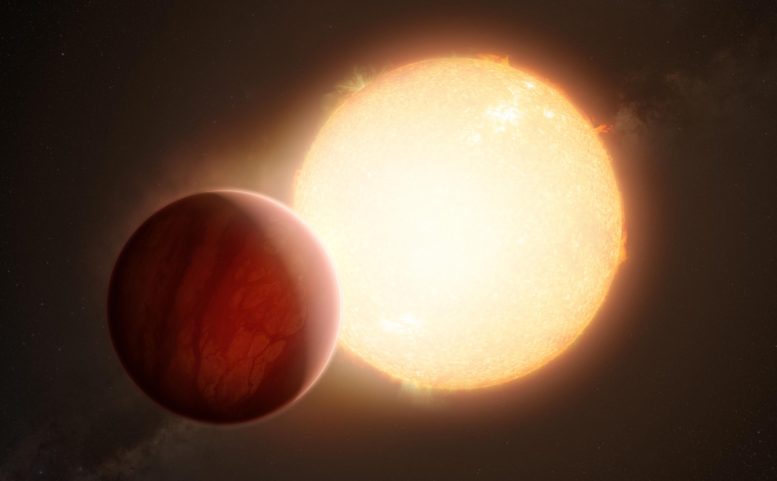
This artist’s impression shows an ultra-hot exoplanet, a planet beyond our Solar System, as it is about to transit in front of its host star. Credit: ESO/M. Kornmesser
Using the HATNet telescopes, CfA astronomers and colleagues discovered three new hot Jupiters and identified a new subclass of extra-solar planets, dubbed “highly inflated Jupiters.”
There are currently 851 confirmed extra-solar planets. Of these, 289 were detected because their orbits (as seen from Earth) take them across the face of their host star, dimming the star’s light in what is known as a transit event. The Kepler satellite has provided the largest set of transiting extra-solar planets and, if the list is expanded to include candidate planets (that is, planets spotted but not yet confirmed), it contains several thousand objects. Of the 289 confirmed transiting planets, though, 194 were found with ground-based telescopes.
“Hot Jupiters” are extra-solar planets whose masses are about the same as Jupiter’s, but whose orbits are so close to their stars that (unlike Jupiter in our solar system) their atmospheres are very hot, in some cases over 2000K, and are correspondingly swollen to as much as twice the diameter of Jupiter. The large diameters and small orbits (frequent transits) of hot Jupiters make them a particularly good class for grand-based telescopes to identify via their transits. Scientists who model planetary atmospheres calculate that the diameters of hot Jupiters should be inflated, but they cannot yet adequately explain the measured sizes. For that matter, scientists are not sure why hot Jupiters should exist at all, nor how they formed and evolved. Astronomers trying to understand how the Earth formed and how it ended up orbiting the Sun at a distance just right for temperatures conducive to life are therefore very interested in the lessons to be learned from hot Jupiters.
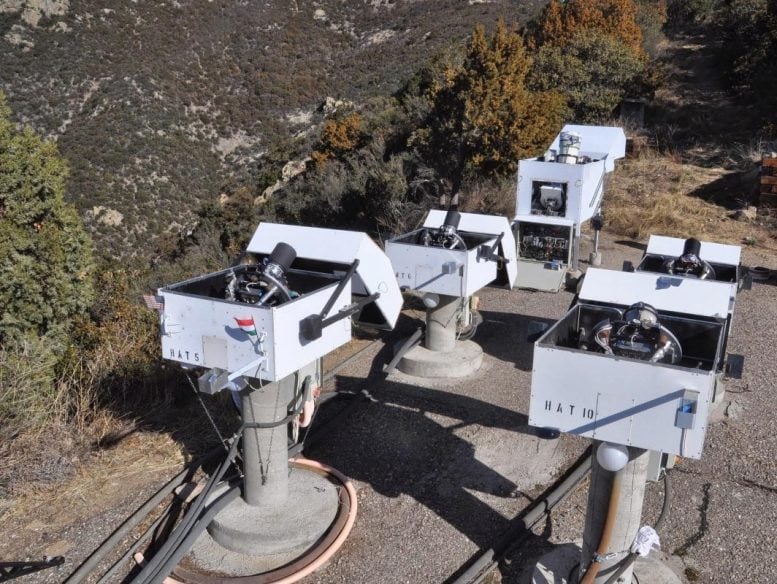
The HATNet telescopes (open for servicing during the day) at the Fred L. Whipple Observatory in Arizona. The telescopes have detected three exceptionally large extra-solar planets, dubbed highly inflated Jupiters. Credit: Gaspar Bakos
The same size and orbit characteristics of transiting hot Jupiters make them particularly good candidates for ground-based observations. CfA astronomers have pioneered a new technique for discovering and studying extrasolar planets using a system of six small, automated ground-based telescopes (apertures between about 6 and 11 centimeters) that take digital, optical images of the sky nightly, looking for intensity variations in the stars’ light. Although the telescope apertures are small, the field of view of each telescope in the sky is large, and many thousands of stars are simultaneously monitored. The cameras use multi-megapixel CCDs to obtain tens of thousands of exposures that the software then scans looking for variability that signals planetary transits. The telescopes, which currently operate at the Fred L. Whipple Observatory in Arizona and the Submillimeter Array in Mauna Kea, Hawaii, are collectively called the HATNet. So far, HATNet has discovered 42 of the 289 known transiting planets.
CfA astronomers Bence Beky, Torres Guillermo, Dave Latham, Bob Noyes, Gilbert Esquerdo, Allyson Bieryla, Dimitar Sasselov, Gabor Furesz, and Robert Stefanik and their colleagues using HATNet have just announced the discovery of three new hot Jupiters — and in so doing have identified a new subclass of extra-solar planets, dubbed “highly inflated Jupiters.”
The three new planets each have orbital periods of just a few days, masses smaller than Jupiter’s by about 20%, and exceptionally large radii, about 50%-70% bigger than Jupiter’s. Combining their results with statistics of previously known hot Jupiters, the scientists realized that planets like these three, with radii over 50% larger than Jupiter’s radius, form a distinct subset of hot Jupiters. Although the reasons for their existence remain a topic of research, as with all the hot Jupiters, the new results demonstrate how important it is for astronomers to collect detailed information on large numbers of objects. One might perhaps think that the thousands of known or suspected extra-solar planets comprise a large enough set for a thorough understanding of planets, but the discovery of this distinct subset of highly-inflated Jupiters illustrates the need for more research.



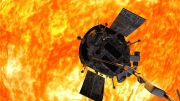
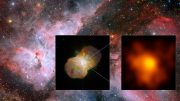

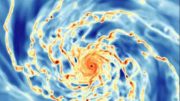


Be the first to comment on "A New Subclass of Extra-Solar Planets Discovered"